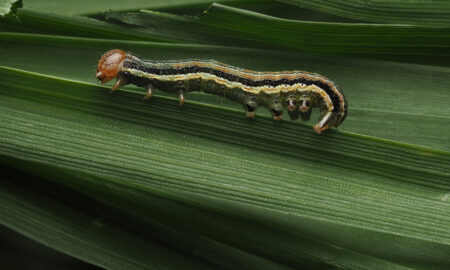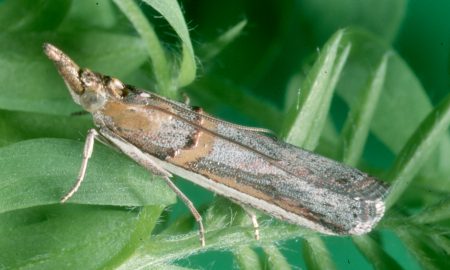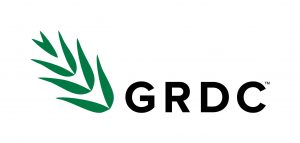Key takeaway: Argentine scarab larvae are turning up in high numbers in some NSW wheat paddocks. They’re turf pests, but it’s unclear if they damage broadacre crops. Suspect damage? Report it and help us assess the risk.
Argentine scarab (Cyclocephala signaticollis) larvae have recently been reported in exceptionally high numbers in wheat paddocks around Forbes, Central West NSW. In some areas, densities of up to 40–50 larvae per square metre have been recorded. While such high numbers can understandably cause concern, the status of the Argentine scarab as an agricultural pest in Australia remains unclear.
This invasive species was first recorded in Sydney in 1947 and has since been detected in Queensland, the ACT, South Australia, and Victoria. You may have seen the adult beetles during the warmer summer months, possibly mistaking them for Christmas beetles, as they often take flight at that time. While the adults are harmless, the larvae develop and feed underground during autumn and winter, which is when any potential damage can occur.
In Australia, the Argentine scarab is primarily regarded as a turf pest and registered insecticides are approved for predominately in turf situations only. However, in Argentina, larval host records also include agricultural crops such as lucerne, wheat, maize, linseed, sunflower, and barley.
So, although the Argentine scarab is not considered a broadacre crop pest in Australia, we are keen to hear from growers and advisors about any suspected damage.
In the most recent report from Forbes, wheat stems were found severed at ground level. However, African black beetle adults were also present in the paddocks, and the damage observed was more consistent with their feeding habits than with Argentine scarab larvae.
In autumn 2020, we received a sample of Argentine scarab larvae from the same region, where they were suspected of feeding on lucerne. Some unhealthy lucerne plants were found with larvae around their roots, but the exact cause of damage was not confirmed.
If you suspect scarab larvae are damaging crops in your paddocks, we encourage you to report it to Pestfacts Southeastern. Your reports will help us determine whether Argentine scarab poses a threat to broadacre cropping in Australia.
Argentine scarab larvae may be confused with other species such as yellowheaded cockchafer, redheaded pasture cockchafer, and African black beetle larvae.
How to identify Argentine Scarab larvae:
- Orange head capsule that is smooth (not pitted)
- Horizontal anal opening
- Patch of coarse hairs above the anus
- Final two spiracles (crescent-shaped plates along the body sides) are larger than the others
Learn more
Scarabs and cockchafers – beyond head colour
Acknowledgements
Thanks to Jim Cronin (Nutrien Ag Solutions) for providing field reports.
Cover image: Photo by Paul Umina, Cesar Australia





